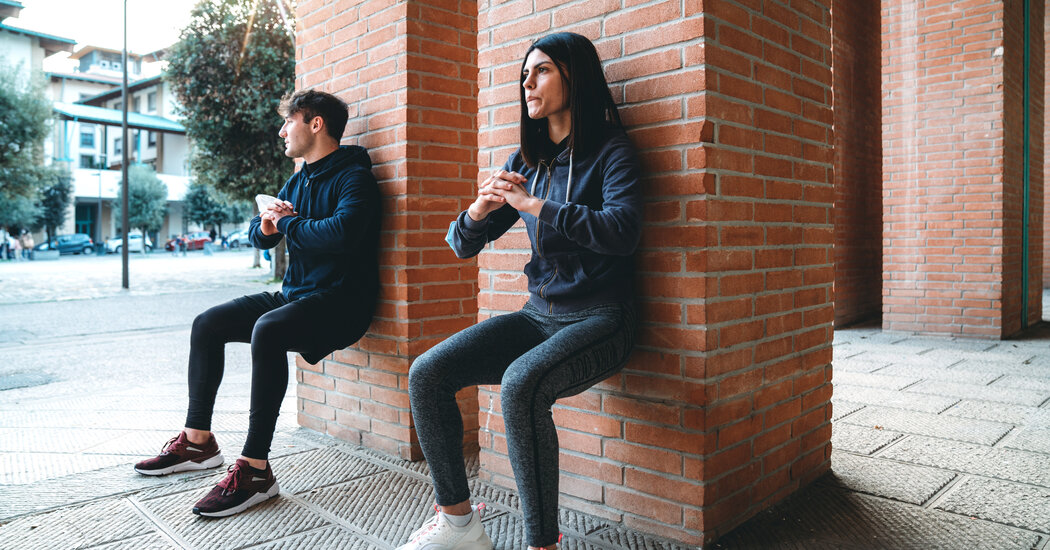Blood
A Simple 14-Minute Workout That Could Lower Your Blood Pressure
A new study points to the humble wall squat as the most effective tool to fight hypertension.
It has become almost a cliché across doctor’s offices: One of the most trusted tools to lower blood pressure is to exercise.
A jog or stroll around the block, experts consistently find, can have big payoffs in terms of heart health. A new study, however, points to a somewhat surprising exercise that may be able to dramatically reduce someone’s blood pressure: the wall squat.
A team of researchers based in Britain analyzed 270 previous studies that examined the link between exercise and blood pressure. They found that, predictably, exercises like running, walking, cycling, strength training and high-intensity interval workouts all helped to reduce blood pressure; mixing cardio and strength training also appeared to help.
But the most effective type of workout they looked at, especially for those who already had some form of hypertension, was isometric exercise, which involves contracting a set of muscles without moving — think planks.
This new research adds to a growing body of evidence that quick bursts of exercise — like speeding up your walk during a commute or carrying groceries with a bit more vigor — can have significant benefits for people’s overall health.
“Everybody feels this incredible threat to their time — everybody feels like they don’t have enough time,” said Dr. Tamanna Singh, co-director of the Sports Cardiology Center at Cleveland Clinic, who was not involved with the study. “It’s so interesting to see more studies coming out showing, actually, time really is not the limiting factor.”
The British researchers looked at three kinds of isometric workouts in particular: squeezing a handgrip, holding a leg extension machine in place and squatting with your back against a wall. The wall squat (sometimes called a wall sit) is probably the easiest option for people to try, as it doesn’t require any equipment, said Jamie J. Edwards, a researcher at Canterbury Christ Church University and the lead author on the study.
Even though isometric exercises may appear relatively easy, they are often quite intense, Dr. Edwards said — as you hold yourself in place, sweating and straining. He recommends a 14-minute routine you can add to your regular workout perhaps three times a week: a two-minute wall squat, followed by two minutes of rest, repeated four times in total.
You should stay at the same squat height for all four rounds, but the exercise will feel more challenging the more times you do it, said Jim Wiles, a principal lecturer at Canterbury Christ Church University who was also an author on the study. The first bout should feel as if you are exerting yourself at a level of four (out of a possible 10, with 10 feeling as if you could not hold it any longer). The last bout should be around an eight, he said. You should feel reasonably exhausted by the end.
And be careful to not hold your breath while you do it, Dr. Edwards added.
The researchers aren’t entirely sure why isometric exercises seem to be so effective for combating hypertension. One prominent theory, Dr. Edwards said, is that when you clench your muscles without moving, the local blood vessels around them compress — and then when you release, blood flushes back, causing the vessels to widen or dilate if you perform the exercise frequently enough, in a way they don’t during a dynamic exercise like a run.
That change can be critical, because over time, high blood pressure can stiffen our arteries and prevent them from dilating properly, which restricts how much oxygen-rich blood they can deliver. This increases the risk of having a heart attack or stroke, Dr. Singh said.
The study doesn’t mean you should ditch your run and go straight for wall squats — isometric exercise should complement, not replace, your favorite workout, Dr. Edwards said, whether that’s cardio or weight lifting. And if you have any underlying medical conditions, you should consult with your doctor to check that isometric exercise is safe for you, Dr. Wiles suggested.
But if you are looking for a heart-healthy addition to your workout, you could do worse than the humble wall squat.
“You truly only you need your body,” Dr. Singh said. “You don’t even need shoes.”

